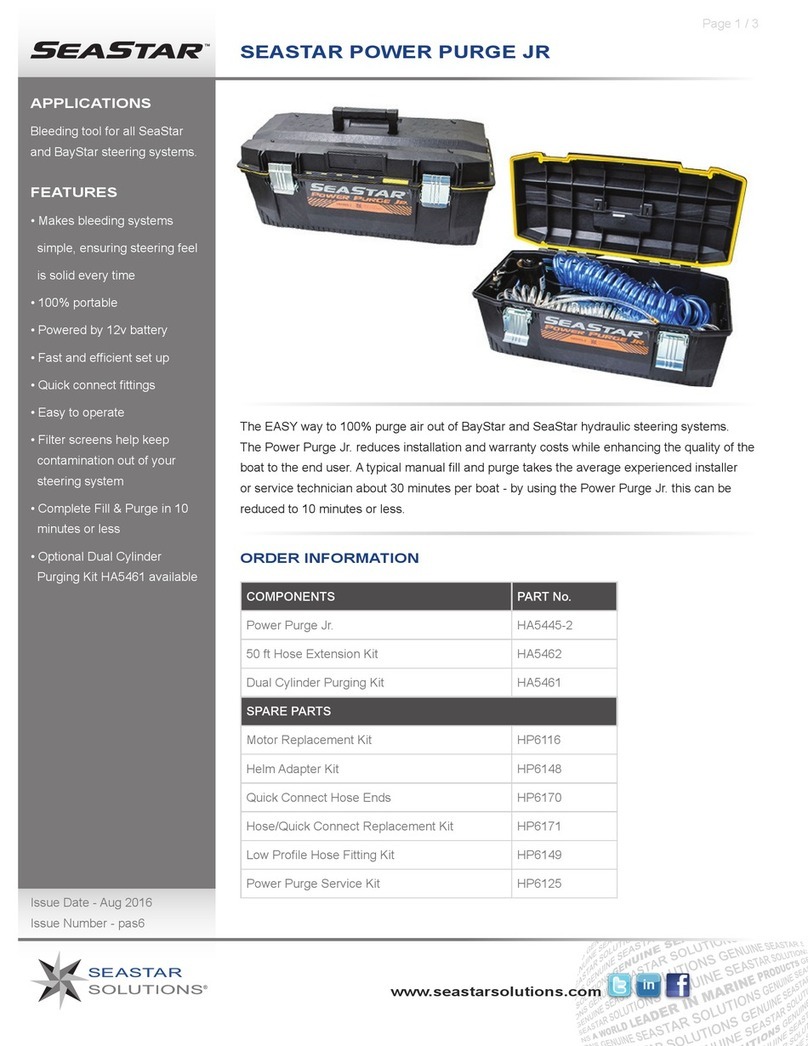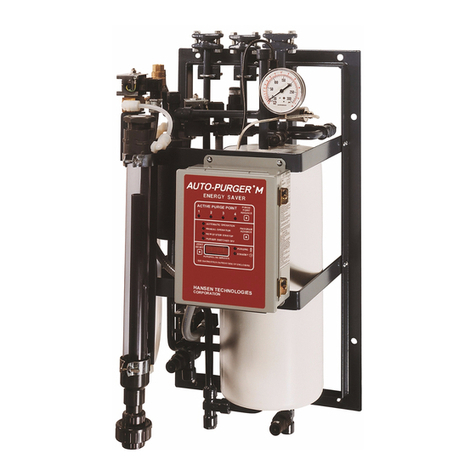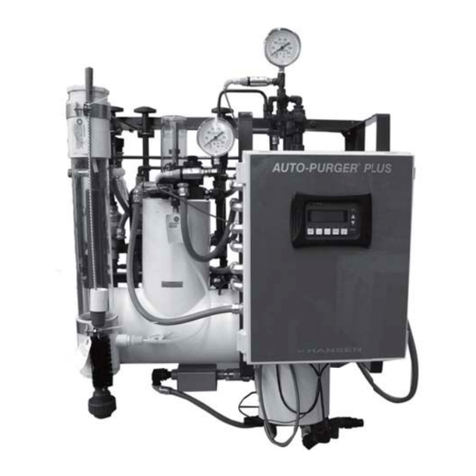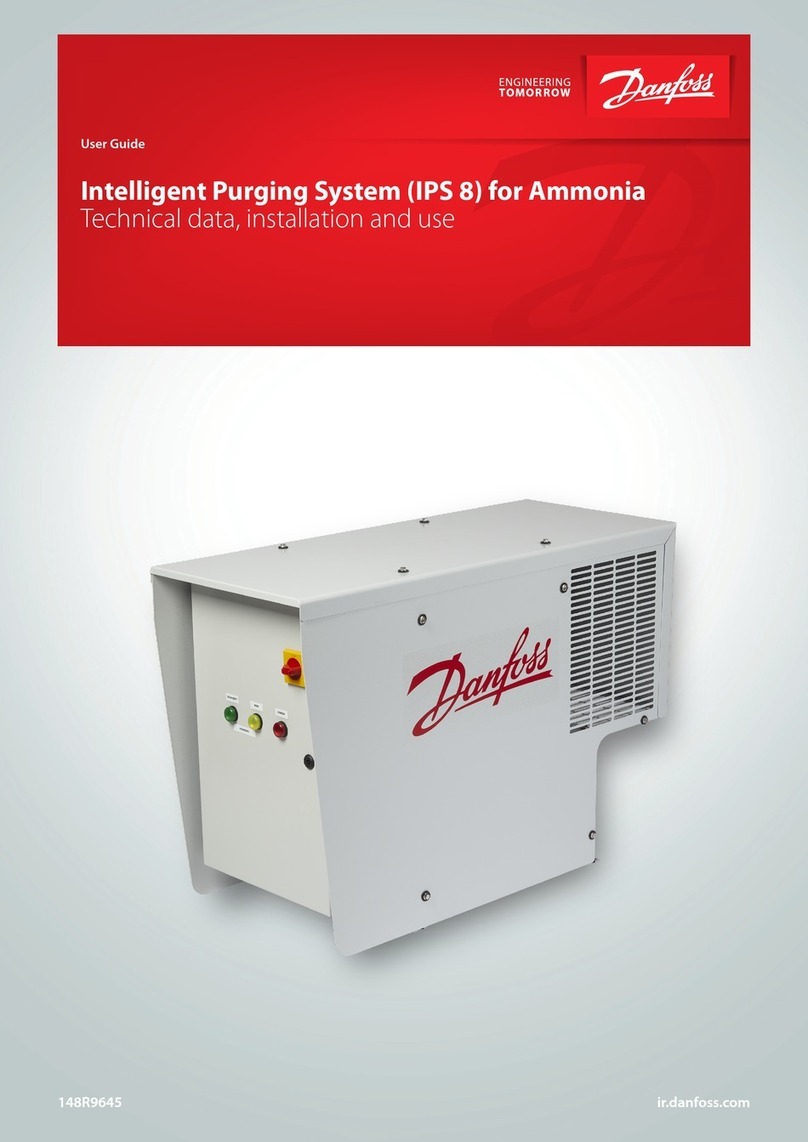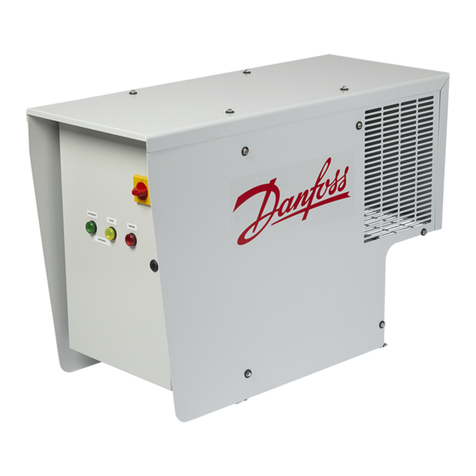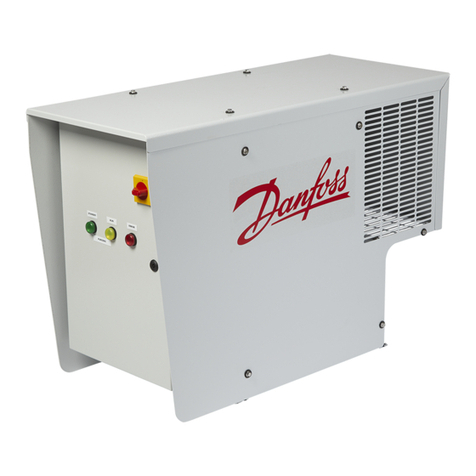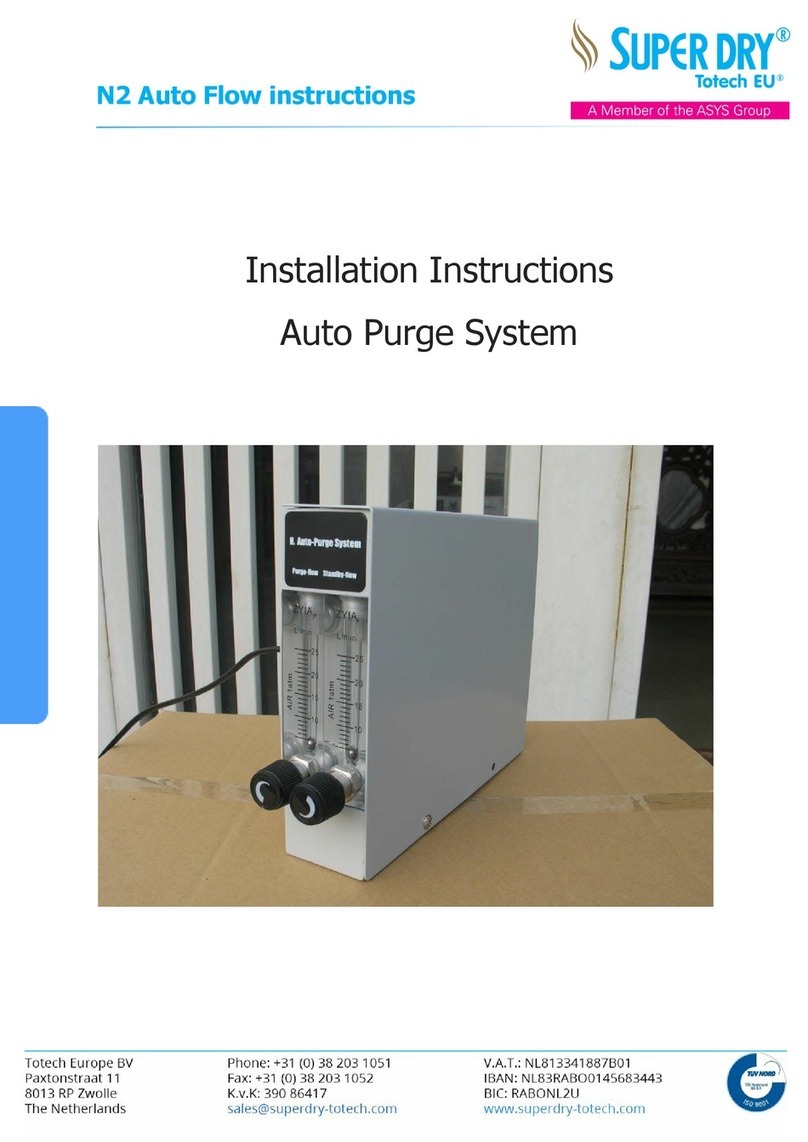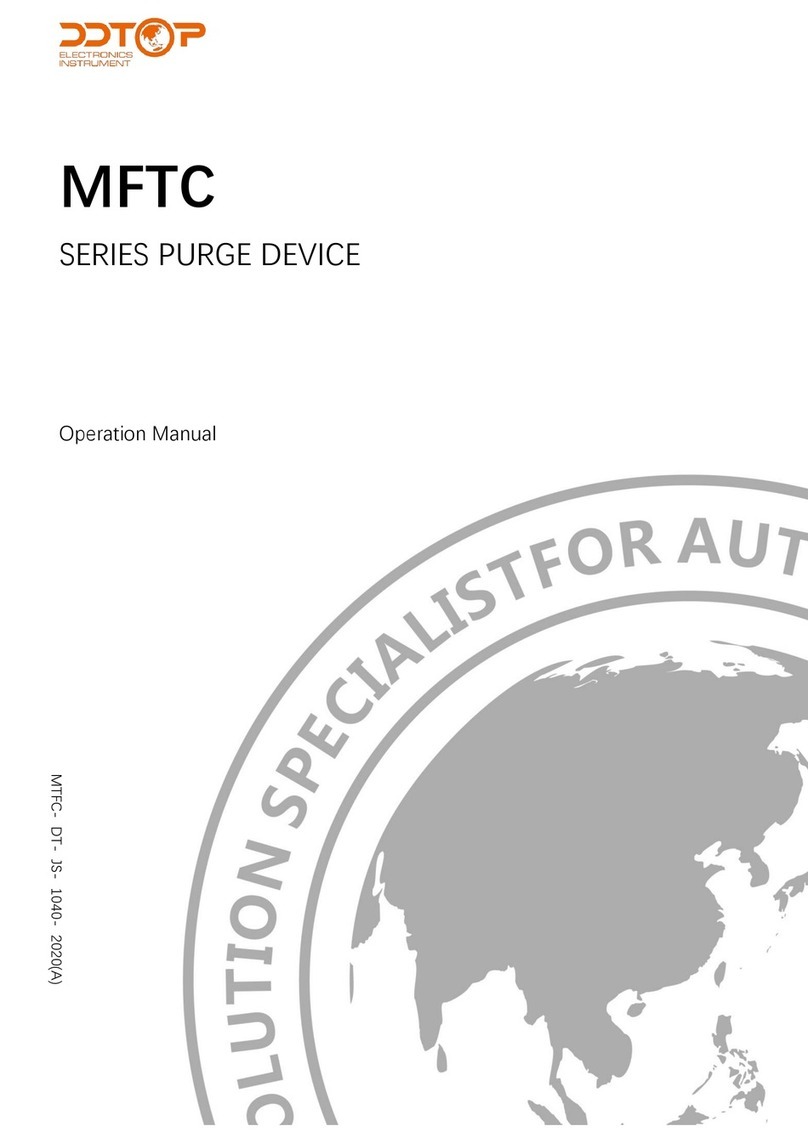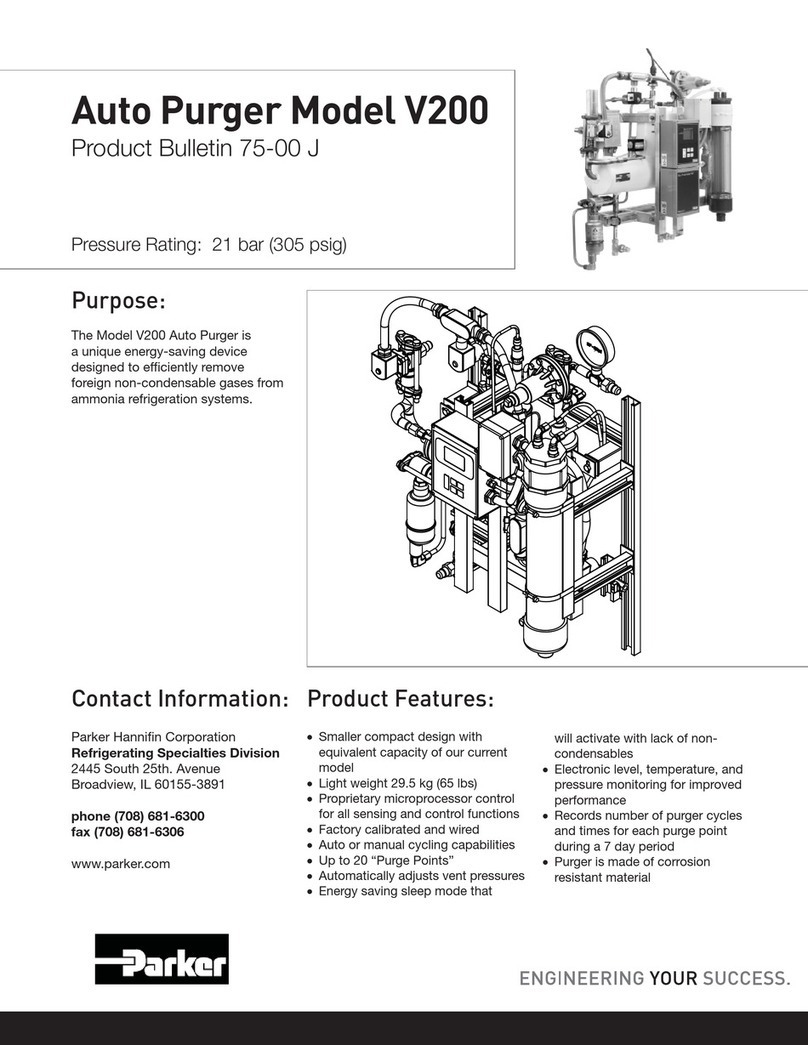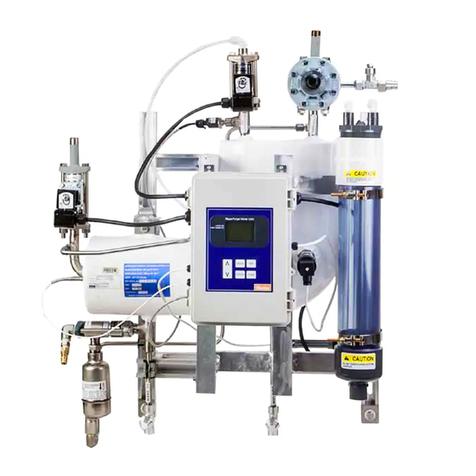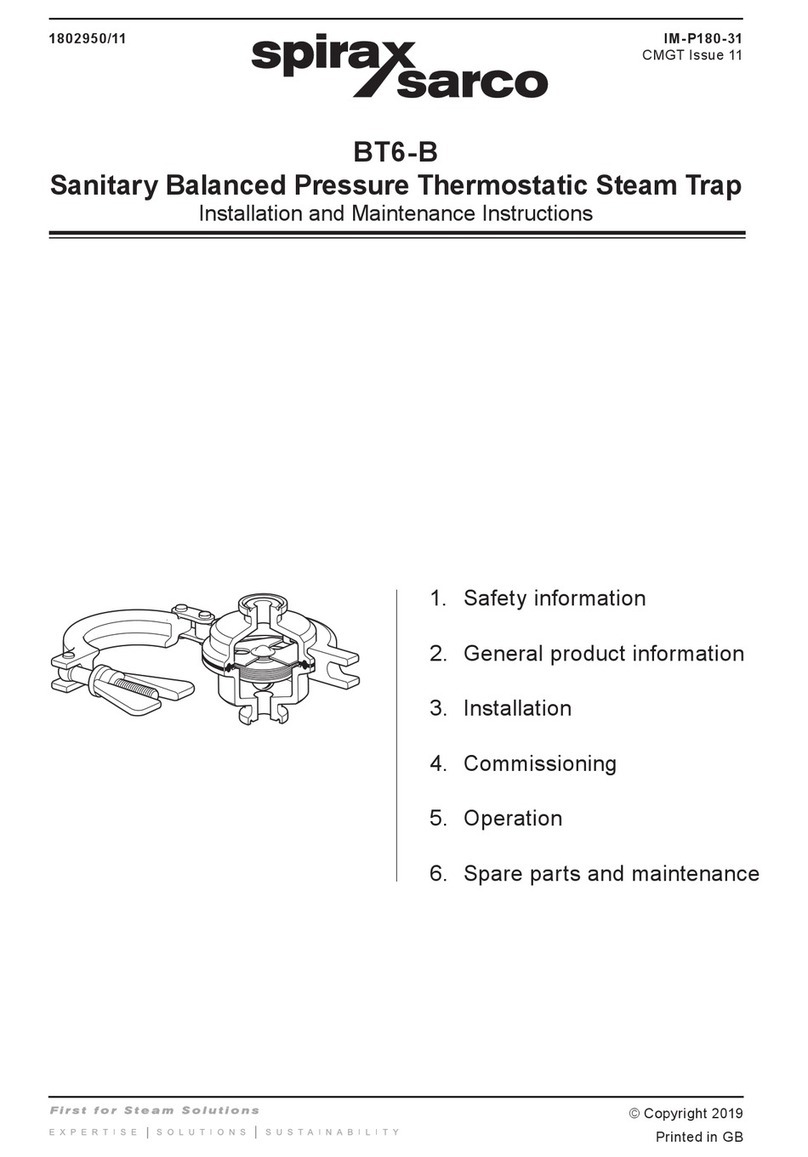
7
“BYPASS” KeypadSwitch .......................................................................................................................................33
ExitingFault “BYPASS” Mode............................................................................................................................34
“DIAG.” KeypadSwitch...........................................................................................................................................34
“LOGs” KeypadSwitch ............................................................................................................................................36
Log1 - 30 day"slidingwindow"averagepurgepumpout time(chillerOFF)........................................................36
Log2 - 30 day"slidingwindow"averagepurgepumpout time(chilleron)...........................................................36
Log3 - Pumpout timethat hasoccurredduringlast 24 hour“slidingwindow” period ..........................................37
Log4 - Pumpout timeduringthe1st three(3) hoursfollowinglast chillershutdown.............................................37
Log5 - AveragedailychillerRUNtimeforlast 30-dayperiod .............................................................................37
Log6 - Total accumulatedpurgecondensingunit “RUN” timesince installed......................................................37
Log7 - Total accumulatedpurge“pumpout” timesince installed..........................................................................38
Log8 - Averagedailypumpout timeforlast 30 dayperiod...................................................................................38
Log9 - Numberof AdaptiveorAutoruncycles“ChillerON” (maximum 8cycles perday)..................................38
Log10 - Numberof Adaptiveonlyruncycles“ChillerOFF” (maximum 8cyclesperday) ...................................38
Log11 - Interval Log - Total chillerruntimesince loglast reset..........................................................................39
“CLEARLOGs” KeypadSwitch...............................................................................................................................39
“RESET” KeypadSwitch..........................................................................................................................................40
“STATUS” KeypadSwitch .......................................................................................................................................40
“<“or“>“ CURSORMOVEMENT KeypadSwitches..................................................................................................40
Informational Displays................................................................................................................................................40
STATUSDisplay...................................................................................................................................................... 40
LOGs Display........................................................................................................................................................... 41
Log1 - Purge30-dayaveragepumpout timewhilechillerisoff (Hrs&Min.)......................................................41
Log2 - Purge 30-dayaveragepumpout timewhilechillerison(Hrs&Min.).......................................................41
Log3 - PurgePumpout forLast 24 Hours(Hrs&Min.) .......................................................................................41
Log4 - Pumpout timefirst 3hoursafterlast chillershutdown(Hrs&Min.).........................................................42
Log5 - Last 30-DayChillerRunTime(dailyaverage)(inhours).........................................................................42
Log6 - Total PurgeCondensingUnit RunTime(inhours) ..................................................................................42
Log7 - Total CumulativePumpout Time(in hoursandminutes)..........................................................................42
Log8 - 30-DayAveragePumpout Timeperday(Hrs&Min.)..............................................................................42
Log9 - Numberof AdaptiveorAutoruncycles“ChillerON” (maximum 8cyclesperday)..................................42
Log10 - Numberof Adaptiveonlyruncycles“ChillerOFF” (maximum 8cyclesperday) ...................................43
Log11 - Interval log(indays, hoursandminutes)................................................................................................43
“SENSORS” Display................................................................................................................................................ 43
(Superheat)RefrigerationCompressorSuctionTemperature.................................................................................43
(Evaporator)PurgeTankEvaporatingTemperature..............................................................................................43
(LiquidLevel Status)DrainStatus........................................................................................................................43
“MISCELLANEOUS” - Informational Displays........................................................................................................44
Pump-out Display................................................................................................................................................. 44
DRAINBACKEQUALIZATION CYCLE...........................................................................................................44
SensorErrorDisplays...........................................................................................................................................45
Fault Indications ..................................................................................................................................................46
PURGE FAULT...............................................................................................................................................46
DRAINFAULT...............................................................................................................................................46
BATTERYFAULT .........................................................................................................................................46
MAINTENANCE .......................................................................................................................47
Periodic Maintenance.................................................................................................................................................. 47
Weekly ..................................................................................................................................................................... 47
Semi-Annually.......................................................................................................................................................... 47
MoistureMonitoring.................................................................................................................................................47
Table 1 - DeterminingRefrigerant Moisture Content................................................................................................48
Filter-Drier Replacement............................................................................................................................................49
Optional liquidreturn linefilter-drier: (ifused) ........................................................................................................49


